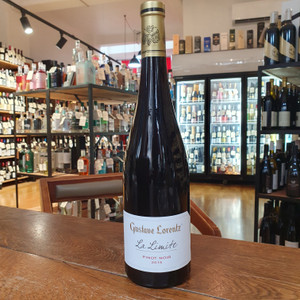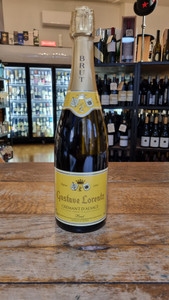
Tasting notes
Fine and expressive nose, white flowers, dried fruits and smoky aromas. Ample attack, full-bodied, harmonious and well-balanced with a long acidity. Complex notes of marmalade, spices and white truffle. This is a round and charming wine with beautiful length.
Food & Wine
It will pair with refined dishes based on sea fish in sauce with mushrooms.
Origin.
The 3.23 ha of the Kanzlerberg (smallest Grand Cru in Alsace!) vineyard are composed of a characteristic clay-limestone soil, but also include grey and black gypsum Muschelkalk-bearing marl, something rarely seen in the Alsace wine producing region, which create a very heavy soil. The rather steep, South and South-West facing slope of Kanzlerberg, flattens out to form a small plateau of an average altitude of 250 meters, below which flows the Bergenbach brook. Gustave Lorentz is the sole producer of Pinot Gris Grand Cru Kanzlerberg. The grapes, carefully selected, are softy and slowly pressed. After a static settling of 18 hours, the must ferments for 3 months in new half-muids (500 L barrels); then an aging of 8 months on fine lees will follow. After bottling, the wine will be aged in cellar for 4 years. Vintage Winter temperatures were fairly mild, but there was less rainfall than usual. February, on the other hand, was marked by a spike of intense cold. Bud break was early, thanks to a mild March, but the low temperaturesthroughout April and May delayed vegetative growth. Because of this, flowering began late, towards the end of May and continued on throughout June. The relatively humid conditions that pertained during this period created the ideal condition for downy mildew, with an onslaught of powdery mildew increasingly prevalent in July. While the incidence of both diseases was high, the vigilance of the region’s growers and the very warm August temperatures helped to limit their impact. In some places and in some soils, these very hot conditions delayed ripening by a little. Thankfully, September saw the arrival of cooler days, which created better conditions for even ripening and healthy grapes. These had good levels of tartaric acid, a necessary precondition for the creation of balanced wines
GET INSPIRED. SHOP CAHN’S
Cahn’s is Auckland CBD’s leading expert for premium wine, eclectic spirits, and fine beer. We blend deep knowledge with a fun, personal shopping experience.
QUICK & EASY WAYS TO SHOP
Fast Delivery: We process and dispatch your order swiftly and securely. Get your favourite Pinot Noir, vintage Port, or rare whisky delivered to your door in perfect condition.
Local Collection: Choose In-Store Pickup at checkout. Pop into our welcoming CBD store to collect your order and say hello to Martin, Tristan, or Frankie. It's the perfect way to blend online ease with a local, personal touch.
THE CAHN CHALLENGE: WE FIND THE ELUSIVE
Finding it difficult and frustrating to find that elusive beverage that you have been yearning for? We pride ourselves on being able to find most products that are available in New Zealand and, at times, we may even import the product ourselves. We dare you to throw down the challenge. Test us. We are confident that we can deliver on most occasions.
CORPORATE GIFTING: STYLISH & SIMPLE
We offer specific services for Corporates as well. Do you need assistance to choose larger quantities of champagne, whisky or wine as gifts during the year or for the end-of-year festivities? Look no further! We thrive on offering advice and sourcing exactly what you are after. We can supply greeting cards and even write the note (with a Montblanc pen) for you and arrange delivery.








